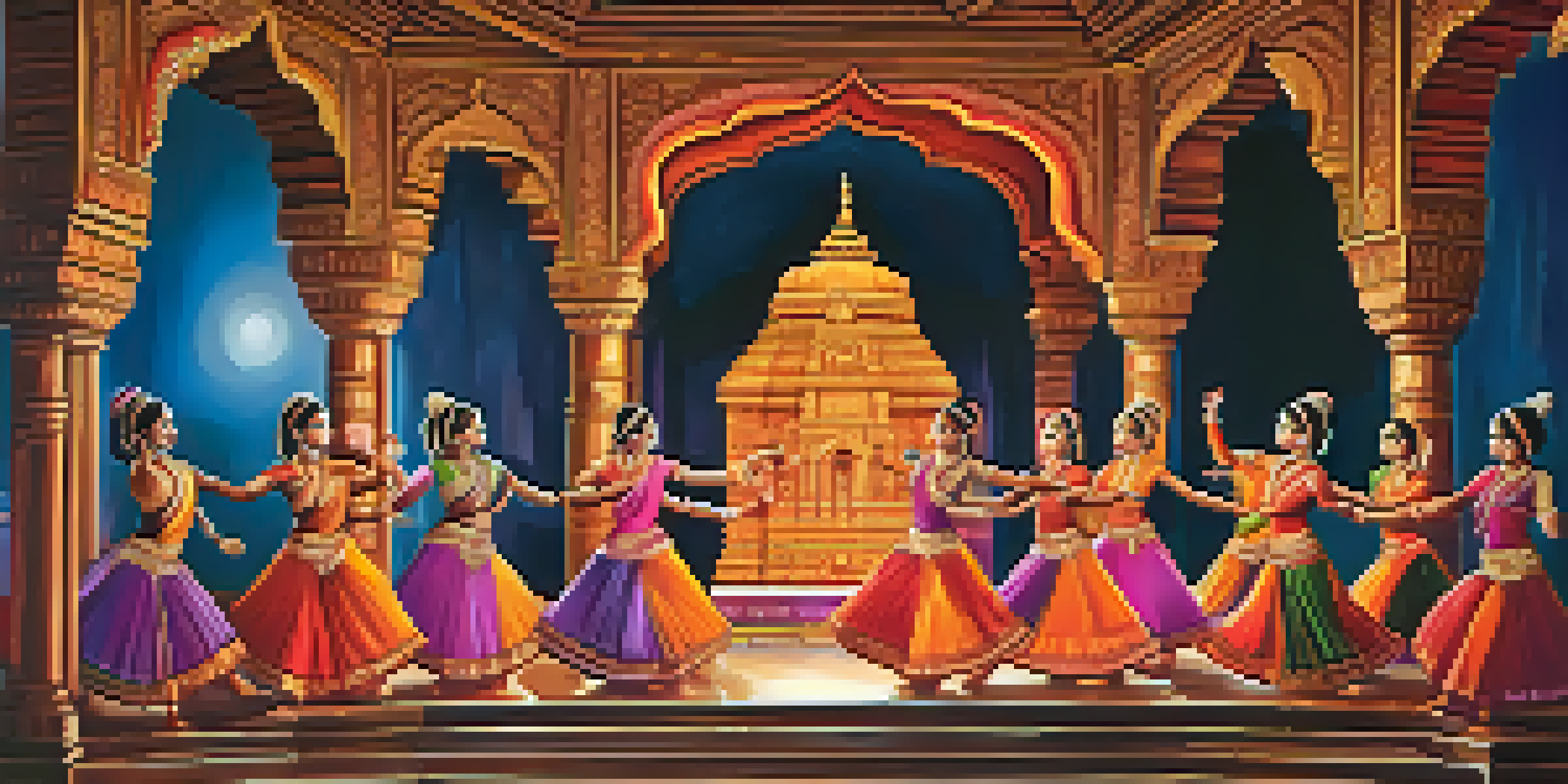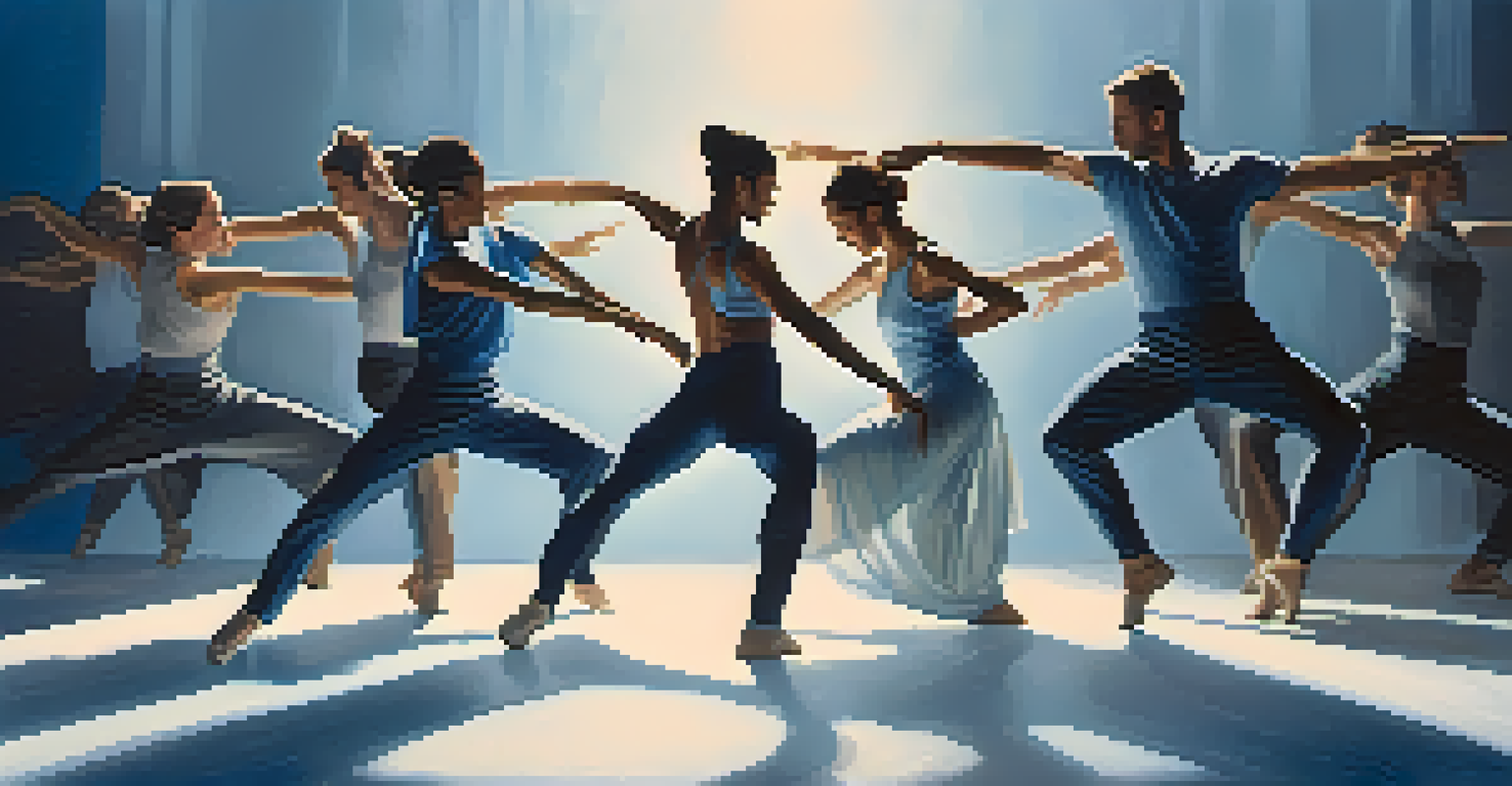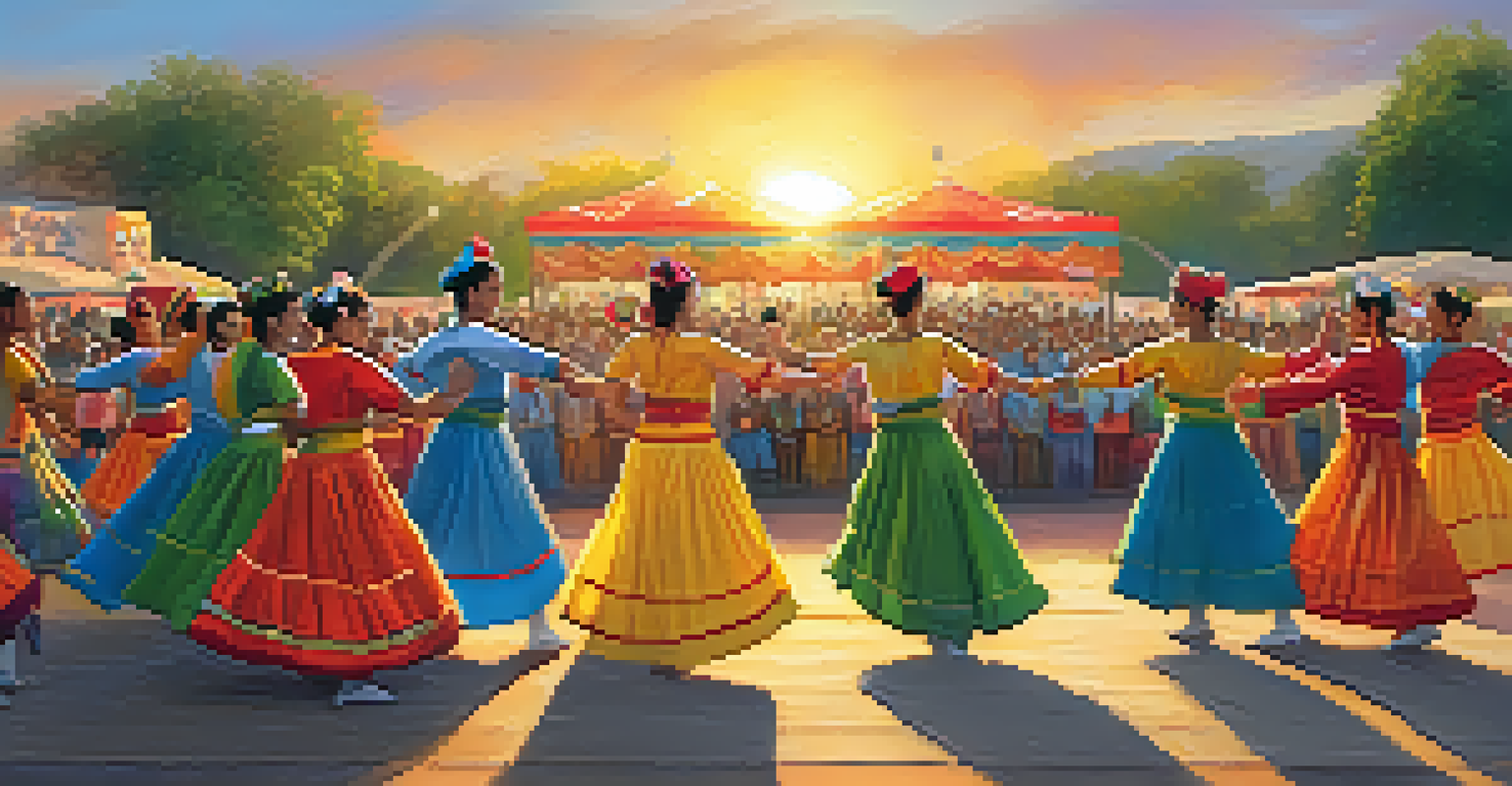Cultural Influences in Dance and Performance Art Practices

Understanding Culture's Role in Dance and Performance Art
Culture serves as the backbone of dance and performance art, influencing styles, themes, and movements. It's not just about the steps or choreography; it's about the stories and emotions woven into the fabric of the performance. Each cultural background brings unique perspectives that shape how artists express themselves on stage.
Dance is the hidden language of the soul.
For example, traditional Indian dance forms like Bharatanatyam are steeped in religious and cultural significance, often portraying stories from ancient scriptures. These performances are not merely entertainment; they are a celebration of heritage and community, conveying messages that resonate deeply with audiences.
As globalization continues to weave cultures together, we see an exciting blend of influences in dance. Contemporary choreographers often draw from multiple traditions, creating hybrid forms that reflect the world’s diversity while still honoring their roots.
Historical Context: Evolution of Dance Across Cultures
The history of dance is a rich tapestry that has evolved through various cultural influences over centuries. From the court dances of the Renaissance in Europe to the African tribal dances that serve as a form of storytelling, each era and region contributes to the global dance landscape. These historical contexts provide a deeper understanding of why certain movements and styles emerged.

Take the tango, for instance. Originating in the working-class neighborhoods of Buenos Aires, it reflects the cultural melting pot of immigrants in Argentina. This dance not only showcases intricate footwork but also tells the story of love, longing, and the human experience shaped by its historical backdrop.
Culture Shapes Dance Expression
Dance and performance art are deeply influenced by cultural backgrounds, which inform the styles, themes, and emotional narratives presented on stage.
In contrast, traditional Japanese Noh theater incorporates elements of dance, music, and drama, rooted in historical narratives. Each performance is a reflection of Japan's rich cultural heritage, emphasizing the importance of preserving these art forms while allowing room for innovation.
Cultural Appropriation vs. Cultural Appreciation in Dance
Navigating the line between cultural appropriation and appreciation can be tricky in the world of dance. Cultural appropriation occurs when elements of one culture are adopted by another, often without understanding or respect for their significance. This can lead to misunderstandings and disrespect towards the original culture.
To watch us dance is to hear our hearts speak.
On the flip side, cultural appreciation involves learning about, respecting, and honoring the traditions of another culture. For instance, when a dancer studies and performs a traditional dance form, they should aim to understand its cultural context and significance. This respect can lead to a beautiful exchange of ideas and techniques.
Prominent dance companies often emphasize the importance of cultural sensitivity in their work. By collaborating with artists from various backgrounds, they can create performances that celebrate diversity while fostering mutual respect and understanding.
The Influence of Technology on Dance and Performance Art
In the digital age, technology significantly impacts dance and performance art practices. From social media platforms showcasing dance challenges to virtual reality performances, technology opens up new avenues for creativity and expression. Dancers can now reach global audiences instantly, breaking geographical barriers.
For example, TikTok has become a breeding ground for viral dance trends, allowing dancers from different cultures to share their moves and styles. This fusion of influences can result in exciting new genres and forms of expression that reflect a truly global culture.
Dance as a Political Voice
Throughout history, dance has served as a powerful medium for social and political expression, uniting communities and raising awareness for critical issues.
Moreover, technology enables artists to experiment with multimedia elements in their performances, creating immersive experiences that engage audiences on multiple levels. This integration of technology not only enhances the performance but also allows for deeper storytelling.
The Role of Dance in Social and Political Movements
Dance has long been a powerful tool for social and political expression. Throughout history, artists have used movement to voice their opinions and bring awareness to critical issues. From the civil rights movement in the United States to global climate change protests, dance serves as a unifying force that transcends language and cultural barriers.
One notable example is the use of dance in the anti-apartheid movement in South Africa. Performers used traditional dance forms to convey messages of resistance and hope, allowing them to connect emotionally with audiences and rally support for their cause.
More recently, the #MeToo movement saw dancers and performers using their art to address issues of sexual harassment and assault. Through powerful choreography and public performances, they created a platform for dialogue and healing, illustrating how dance can be both an art form and a catalyst for change.
Dance as a Reflection of Cultural Identity
For many, dance is an expression of cultural identity and personal heritage. It allows individuals to connect with their roots and share their stories with the world. This connection to culture can be empowering, providing a sense of belonging and pride that transcends individual experiences.
Consider the various folk dances from around the world, such as Irish step dance or Appalachian clogging. Each dance embodies the history, struggles, and joy of the people it represents, creating a living narrative that honors tradition while inviting participation from newer generations.
Technology Transforms Dance Art
The integration of technology in dance allows for innovative expression, breaking geographical barriers and creating immersive experiences that engage global audiences.
Moreover, as communities evolve and diversify, so do their dance forms. Contemporary artists often blend traditional elements with modern techniques, creating works that reflect their multifaceted identities and the societies in which they live.
Future Trends in Dance and Performance Art Practices
As we look to the future, the dance and performance art landscape continues to evolve, influenced by cultural shifts, technology, and societal changes. Emerging artists are experimenting with new forms and styles, often drawing from their diverse backgrounds to create innovative works that challenge traditional norms.
We are likely to see a rise in cross-disciplinary collaborations, where dance intersects with visual arts, theater, and digital media. This blending of genres can lead to fresh storytelling methods that resonate with audiences in new ways.

Additionally, as conversations around inclusivity and representation grow louder, the dance community is increasingly focused on amplifying underrepresented voices. This shift not only enriches the art form but also ensures that a wide range of cultural narratives are shared and celebrated.